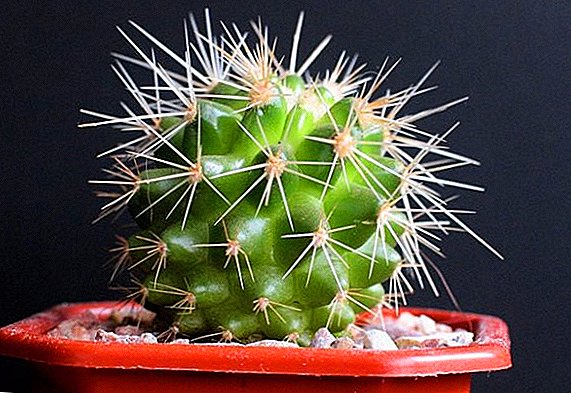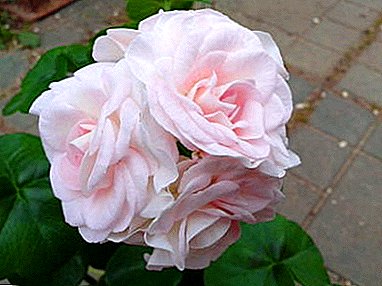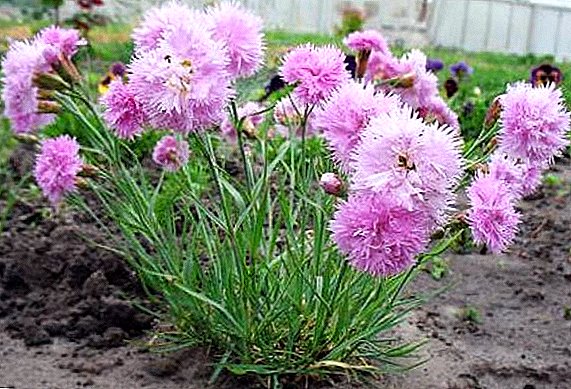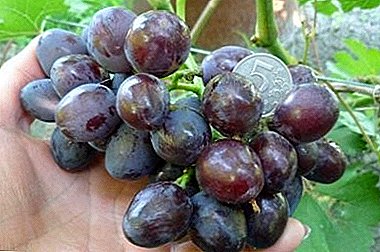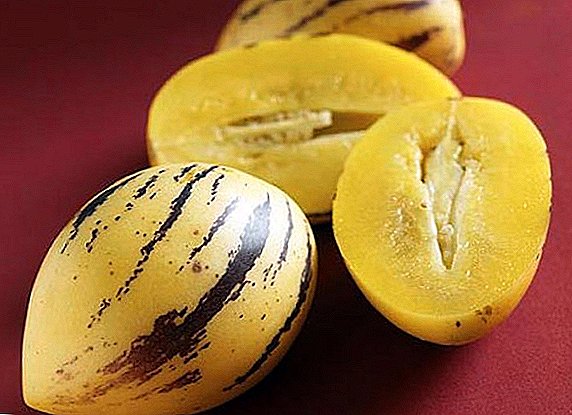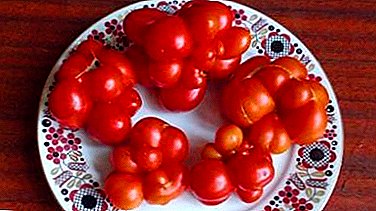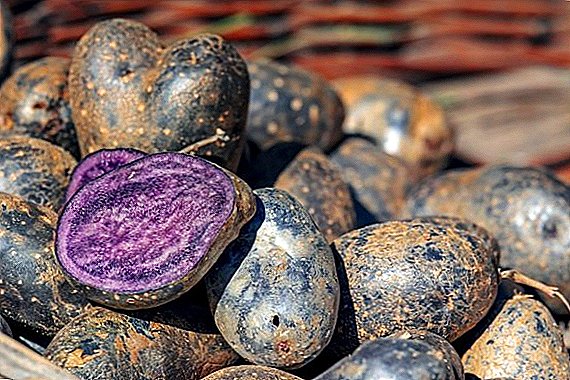 The saying "no rose without thorns" that has existed for centuries in most languages, now has the right to be used only in a figurative sense. Because a rose without thorns is actually there - it is called the Aqua rose and is ideal for bouquets, because it does not hurt the delicate palms of the ladies for whom these gorgeous roses are most often intended. Consider the basic principles of care for this flower in our article.
The saying "no rose without thorns" that has existed for centuries in most languages, now has the right to be used only in a figurative sense. Because a rose without thorns is actually there - it is called the Aqua rose and is ideal for bouquets, because it does not hurt the delicate palms of the ladies for whom these gorgeous roses are most often intended. Consider the basic principles of care for this flower in our article.
Plant description
This queen among other roses is bred by Dutch breeders by crossing remontant and tea roses. It belongs to the hybrid tea varieties that have existed for about a hundred years and, together with them, is remarkable for its continuous flowering throughout the warm period, and even longer in greenhouses.
Did you know? In ancient Rome, the gardens were intended solely for the purpose of growing useful plants for the production of fruits, vegetables and spices. The only exception to the "useless" flowers was made for roses.
Now it is difficult to say what happened: what is the name of a pink color from the color of a flower of the same name, or whether the rose has become a rose by the name of a pink color, often observed during the flowering of this plant.  But it is the rose Aqua that justifies its title almost perfectly, having a pink color in literally all its manifestations, ranging from pale pink to violet-pink. It is a plant that is more than a meter tall, with solid buds reaching up to 12 centimeters in diameter.
But it is the rose Aqua that justifies its title almost perfectly, having a pink color in literally all its manifestations, ranging from pale pink to violet-pink. It is a plant that is more than a meter tall, with solid buds reaching up to 12 centimeters in diameter.
Their petals tend to be colored darker at the edges and lighter at the base, and the buds themselves exude a wonderful fragrance that cannot be confused with any other. Starting to bloom in June, the plant pleases with its flowers until the cold, withstanding frosts down to -10 ° С.
You will probably be interested to read about the varieties and the cultivation of Dutch, Canadian and English roses.
And yet this plant is very resistant to diseases and pests. Well, the main sensational property of the Aqua rose is the long stems, almost devoid of thorns.
Preparation for landing
Sophisticated growers are advised to plant this plant in the fall, before the steady cold weather has come. But you can plant it in the spring. When planting, it is more important to choose a place for the flower where it will grow and the soil suitable for it. 
Important! Rose is contraindicated too wet soil, weakens the protective functions of the plant and spoil the appearance.
For this variety, a neutral and highly fertile soil is preferred. If it does not meet these characteristics, it should be fertilized with compost or peat. In the loamy soil should be added rotted manure with sand. Then the soil prepared in this way should be poured abundantly.
The ground-covering, climbing and standard roses form an unusually beautiful space.
The hole for planting should be dug in such a way that the tender roots of the roses in it should be spacious, and they would not have to bend. To strengthen the radical coma, it is necessary to lower it into the water for twenty minutes before landing.
Landing
It is very important before planting to carefully determine the places where the bushes will grow. If there are already other plants of equivalent growth in the garden on its sunny side, then roses should not be planted closer than a meter from them. And if the neighbors are higher, then the rose bushes must be planted away from them. Seedlings should be placed apart at a distance not closer than 80 centimeters. And between rows of seedlings the distance should be about two meters.
Phased actions in the process of direct landing are as follows:
- carefully straightening its roots, the seedling is placed in the hole in the center;
- placing the root collar five centimeters above the level of the soil, the roots are covered with earth;
- all planted bushes are abundantly watered;
- the ground around the trunks of saplings is mulched using compost or mowed grass with a layer of at least seven centimeters.
Check out these varieties of hybrid tea roses such as "Black Baccara", "Grand Gala", "Abracadabra", "Kerio", "Chopin", "Black Magic", "Sophia Loren", "Double Delight".
Top dressing, watering
Although these flowers do not tolerate too moist soil, regular watering is nevertheless necessary. As soon as the soil at the bushes dries to a depth of about five centimeters, you need to start watering.  The most favorable time for this is early morning. Watering should be carefully, so that water gets to the roots, and not on the branches and leaves. Otherwise, it is possible the appearance of fungal diseases.
The most favorable time for this is early morning. Watering should be carefully, so that water gets to the roots, and not on the branches and leaves. Otherwise, it is possible the appearance of fungal diseases.
After watering, it is highly recommended to loosen the ground around a bush five centimeters deep, without in any way disturbing the roots of the plant. During the warm season, especially when it is cut off the stems with buds, a rose needs feeding in order to recover quickly.
It will be useful for you to read about what mistakes gardeners make most often when growing roses.
In spring, these are usually complex mineral fertilizers with a solution of ammonium nitrate, which in the amount of 50 grams must be added to ten liters of water. In the fall, potash-phosphate fertilizers are more suitable, and in the summer - complex fertilizers with the addition of organics and trace elements.
Depending on the type of fertilizer, nutrition is carried out either by mixing granules or powder to the ground around the bush, or by watering with a solution of root soil. Since concentrated fertilizers can damage the root system, it is necessary to moisten the soil before they are applied. 
Important! Each fertilizing of plants with fertilizers should be followed by the subsequent mulching of the soil.
How and when to trim
Virtually the entire warm season, the bushes need pruning, which stimulates the growth of the plant and its abundant flowering. The main requirement here is that the pruner must be very well ground so that during this operation there will not be inaccurate cuts on the stems with crushed and tattered edges. Such slices do not overgrow for a very long time and become a “gateway” for infection to penetrate.
We recommend you read about the features of care for roses in autumn and spring.
Winter care
When stable cold comes, rose bushes need warming for the winter period. Before this important action, it is imperative to remove all unnecessary from the bushes - leaves, flowers, young shoots that have not reached the desired level of development.  The root collar on the trunk must be prikopat earth, and the bush itself in several layers to wrap non-woven material, which will allow the plant to safely survive even great frosts.
The root collar on the trunk must be prikopat earth, and the bush itself in several layers to wrap non-woven material, which will allow the plant to safely survive even great frosts.
In the spring, the appearance of fresh shoots is a signal that it is time to remove heat from plants. It is recommended to do this in the evening or when the weather is cloudy, so as not to damage the tender shoots by burning sunshine.
Learn more about how to grow a rose from a bouquet, how to keep roses in a vase for a long time, and how to plant roses from the box.
Pests and diseases
Although the Aqua rose is sufficiently resistant to diseases and pests, it is not completely protected from this scourge. All hybrid tea varieties, to which Aqua belongs, are most susceptible to fungal diseases, which are especially actively spreading in conditions of heat and high humidity through spores carried by air streams.
For example, a common fungal disease of rust falls on rose bushes from a juniper growing nearby, the neighborhood with which is extremely undesirable because of this.  On a rainy summer, powdery powdery mildew becomes a frequent uninvited guest. Malignant aphids are often adjacent to this brown mold.
On a rainy summer, powdery powdery mildew becomes a frequent uninvited guest. Malignant aphids are often adjacent to this brown mold.
Leaves affected by mold should be immediately eliminated, and with aphids they are smoothed out with the help of laundry soap dissolved in alcohol. To defeat another fungal attack in the form of gray rot, all the affected and blackened parts of the plant must be destroyed, and the rest sprayed with horsetail broth.
Did you know? There were so many varieties of roses, and there was such confusion in their names that even a special International Rose Registration Center was created.
In addition to infection by fungi, rose bushes are often exposed to the invasion of larvae and caterpillars, which devour both roots and leaves, and young shoots. Among the most active is the leafworm, which not only eats the greens on the bush, but also entangles the leaves with cobwebs. It has to fight with insecticides.  Green moth caterpillars like leaves and shoots of roses. They are also destroyed by chemicals. And spider mites do not eat leaves and shoots, but suck useful substances from the plant, after which it dries. These pests are companions of long-term drought.
Green moth caterpillars like leaves and shoots of roses. They are also destroyed by chemicals. And spider mites do not eat leaves and shoots, but suck useful substances from the plant, after which it dries. These pests are companions of long-term drought.
Fatal pests are nematode worms attacking the root system. It is impossible to fight with them: the plant affected by them is doomed to death and must be removed. And in its place it is recommended to plant some other plant that nematodes fear - for example, calendula.
This gorgeous flower with a delightful aroma, but without prickly thorns every year gets more and more admirers both in gardens and in flower shops.


